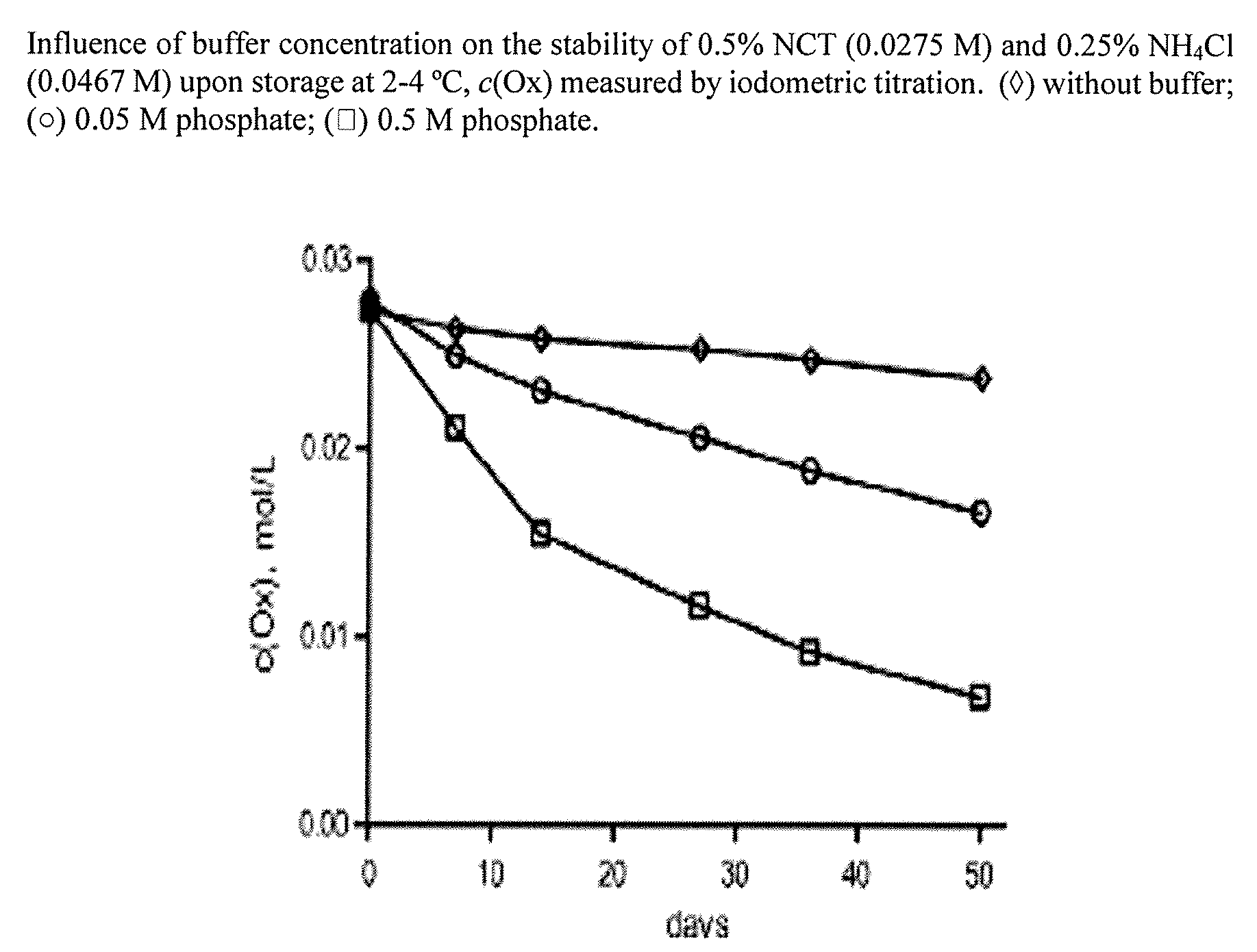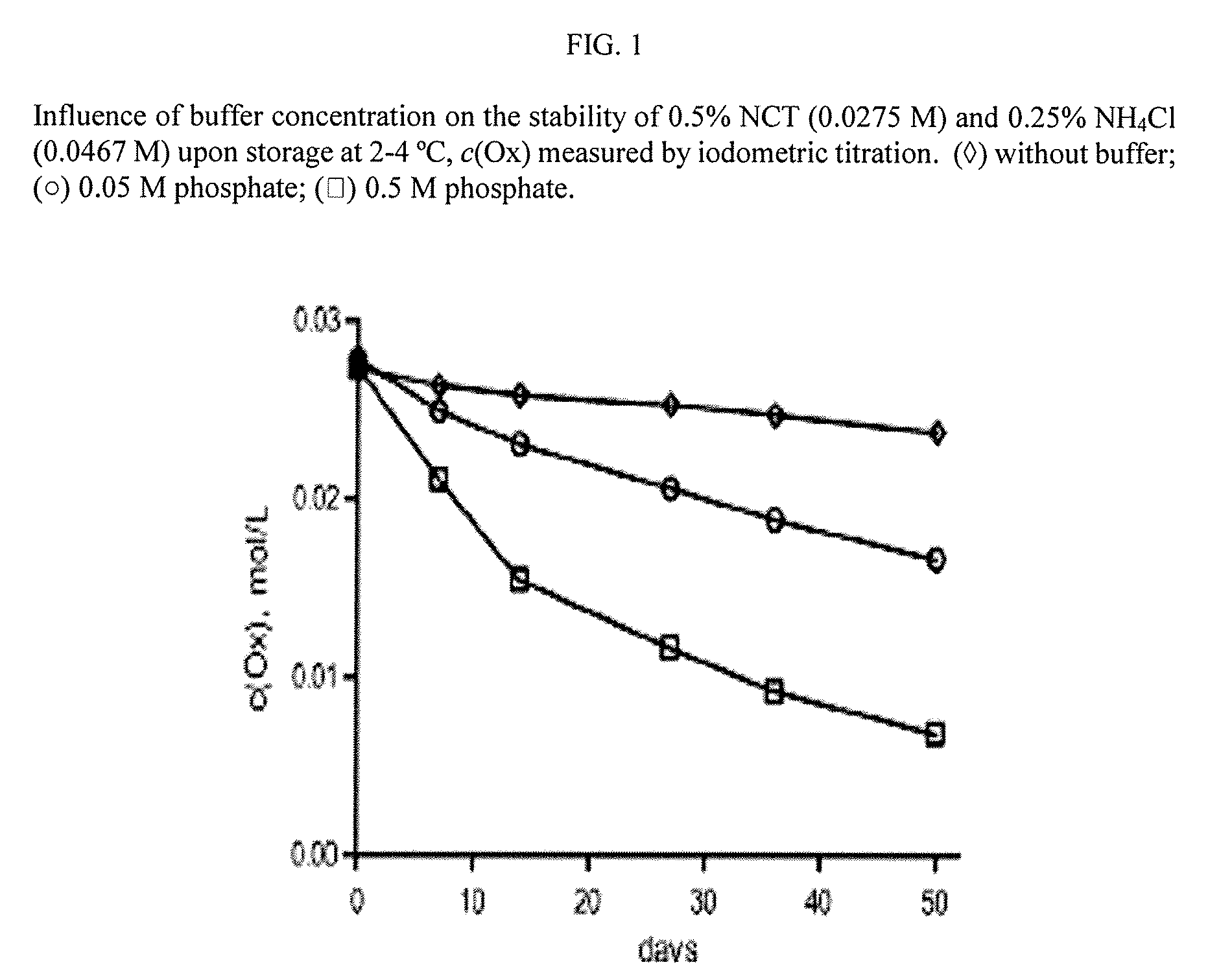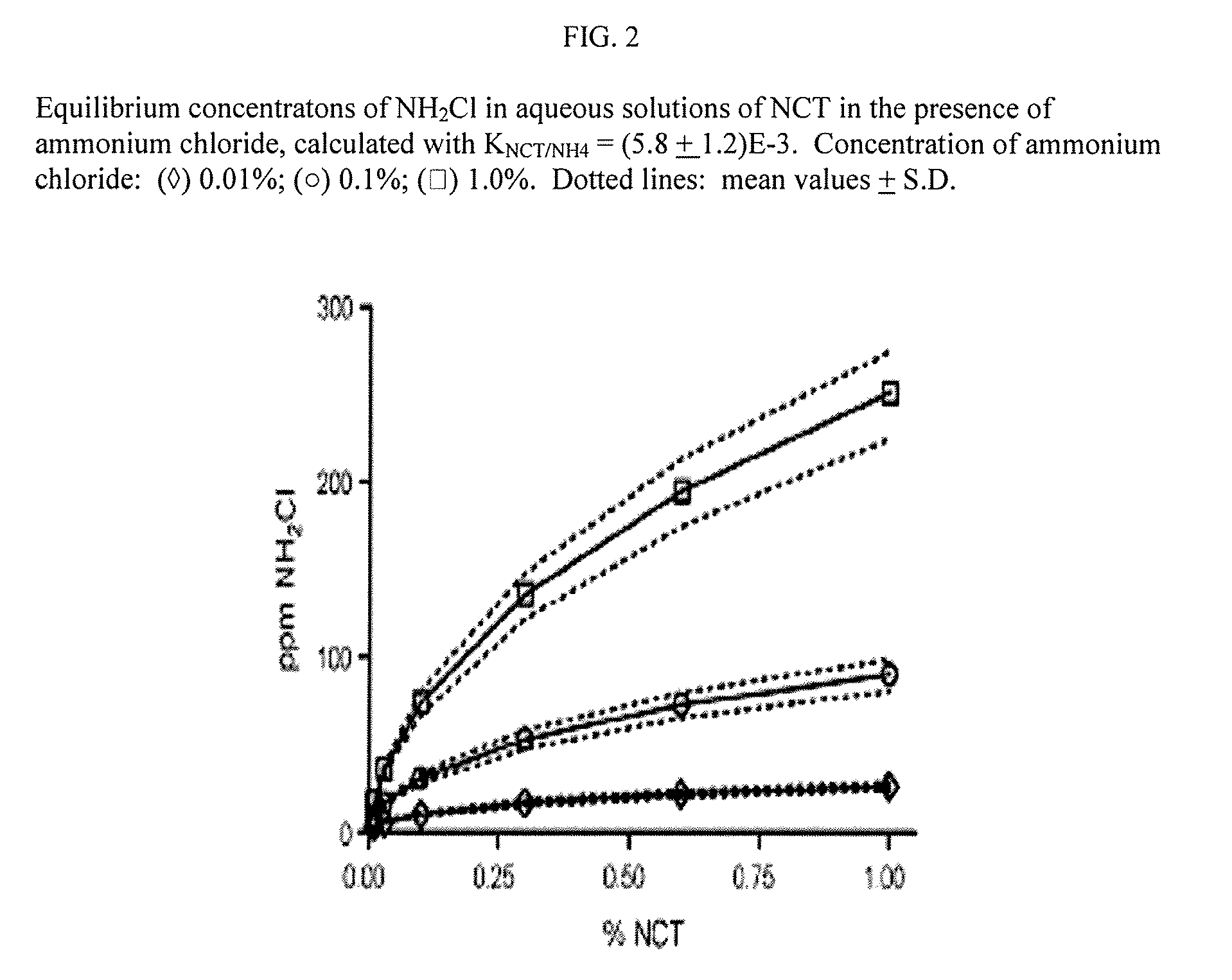Aqueous solutions containing chloramine which are free from di-and trichloroamine, as well as from ammonia
a technology of chloramine and di-trichloroamine, which is applied in the field of chloramine-containing solutions, can solve the problems of sodium hypochlorite not suitable, nhsub>2/sub>cl cannot be stored under normal conditions, and produces ammonia
- Summary
- Abstract
- Description
- Claims
- Application Information
AI Technical Summary
Benefits of technology
Problems solved by technology
Method used
Image
Examples
example 1
Preparation and Stability of an Aqueous NH2Cl-Containing Solution made from 1% N-Chlorotaurine and 1% Ammonium Chloride
[0036]Each 1 g N-chlorotaurine and ammonium chloride were dissolved in 100 mL water, at which a pH 7.5 was settled. After storing 10 days in the refrigerator (0-3° C.) or at room temperature, a pH of 7.5 or 7.1 was measured. The oxidation capacity, assessed by iodometric titration, decreased within the same period from 5.43e-02 M Cl+ to 4.82e-02 M Cl+ (3.35e-02 M Cl+) which equals a daily decrease of 1.1% (3.8%).
[0037]The concentration of NH2Cl was measured photometrically using the known UV spectra of N-chlorotaurine and NH2Cl. Gottardi et al., “Chemical Properties of N-Chlorotaurine Sodium, a Key Compound in the Human Defence System,”Arch. Pharm. (Weinheim) 2002; 335: 411-421; Snyder et al., “Kinetics of Chlorine Transfer from Chloramine to Amines, Amino Acids, and Peptides,”Inorg. Chem. 1982; 21: 2545-2550. The initial concentration was [NH2Cl]=3.88e-03 M (205 pp...
example 2
Preparation and Stability of a Pure Monochloramine Solution
[0038]A solution of 1 g each of N-chlorotaurine and ammonium chloride in 100 mL water was distilled in a rotavapor (water stream vacuum, water bath temperature 50° C.). The distillate contained, according to the UV spectrum, 2.13e-3 M pure monochloramine (NH2Cl, absorption band at λmax=244 nm, A244=0.9812, d=0.1 cm, ε244=461.6 L mol−1 cm−1). After three days storage in the refrigerator at 0-3° C., the band at 244 disappeared, while two bands at 203 nm (A=1.146) and 294 nm (A0 0.148) appeared which are characteristic for the chromophor —NCl2. Gottardi et al., supra. These spectral changes indicate a complete conversion of NH2Cl to NHCl2.
example 3
Preparation of an Isotonic NH2Cl Containing Solution made from 1% N-Chlorotaurine and 0.53% Ammonium Chloride
[0039]1 g N-chlorotaurine (0.0055 mol) and 0.53 g ammonium chloride (0.0099 mol) were dissolved in 100 mL water. The total molarity came then to 0.154 mol / L, which corresponds with an isotonic 0.9% sodium chloride solution. The pH was 7.2, and its chloramine concentration came to [NH2Cl]=2.48e-03 M or 128 ppm.
PUM
 Login to View More
Login to View More Abstract
Description
Claims
Application Information
 Login to View More
Login to View More - R&D
- Intellectual Property
- Life Sciences
- Materials
- Tech Scout
- Unparalleled Data Quality
- Higher Quality Content
- 60% Fewer Hallucinations
Browse by: Latest US Patents, China's latest patents, Technical Efficacy Thesaurus, Application Domain, Technology Topic, Popular Technical Reports.
© 2025 PatSnap. All rights reserved.Legal|Privacy policy|Modern Slavery Act Transparency Statement|Sitemap|About US| Contact US: help@patsnap.com



